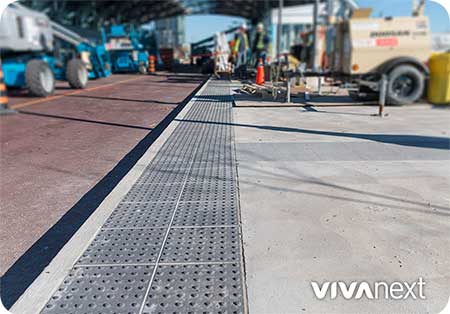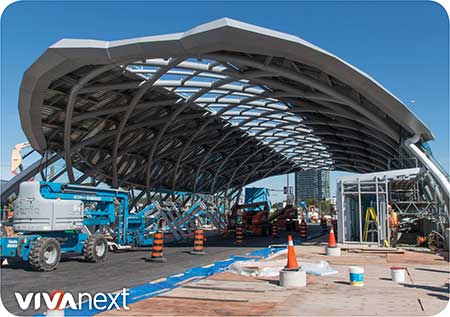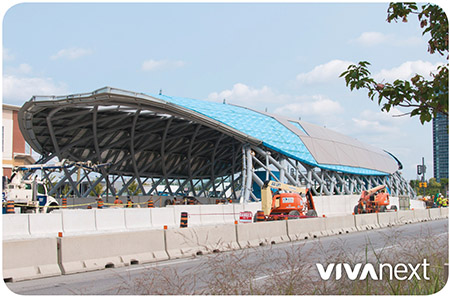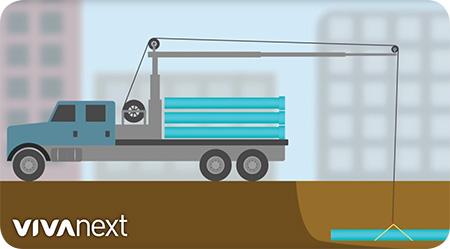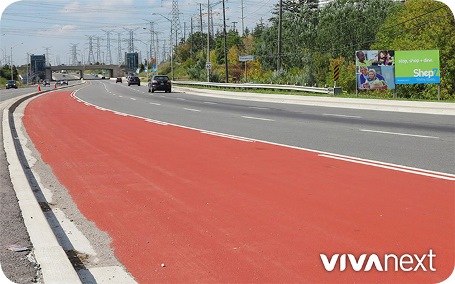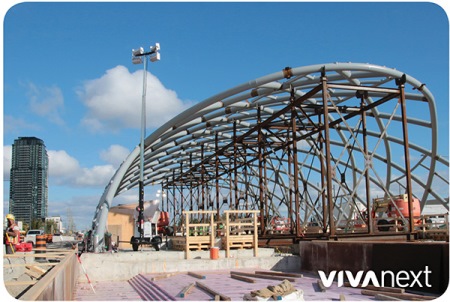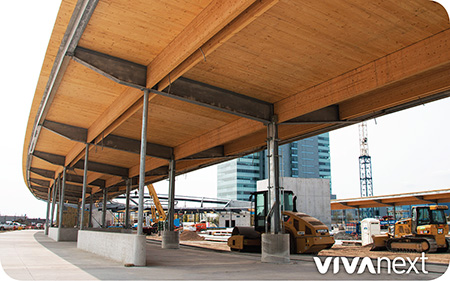
Ready for the crowning touch? The new SmartCentres Place Bus Terminal comes with a mesmerizing pièce de résistance – a sweeping, curved wooden roof, as beautiful as it is functional.
Reminiscent of West Coast style, the horseshoe-shaped roof shelters the outdoor bus stations in beautiful elegance. A fluidity breathes life into the design, curving in a slight v-shape from the outside in, and rising up at the wingtips and the saddle. You can almost feel the motion, very fitting for a bus terminal with YRT/Viva services branching out across York Region.
an intricate jigsaw puzzle
The simple elegance of the roof belies the complexity of its creation. The wood pieces need to look curved, but they are flat. Custom-cut to the architect’s design, they fit together with the steel substructure, which was also designed in custom pieces.
It’s like a very complicated jigsaw puzzle. Every section is numbered and assembled with exact precision. When the flat pieces fit together, they create the appearance of a curved roof. High-strength glued-laminated timber beams support the roof, running vertically and also lengthwise.
Not only does the wood look stunning, it was a cost-effective choice and is Forest Stewardship Council (FSC) certified to York Region standards. When it’s finished, it will be stain-coated with intumescent fire-retardant material.
a showstopper for a new downtown
The result is an eye-catching landmark – a roof that draws the eye and a terminal where you can pass the time in style. After all, SmartCentres Place Bus Terminal is not your run-of-the-mill bus station. As part of the vibrant, new downtown flourishing at Vaughan Metropolitan Centre, this bus station needs to look the part.
Set to open in 2018, the Terminal will complete the transit powerhouse at the VMC: subway, rapidway and YRT/Viva terminal, working together to move you, faster and easier than ever before.

